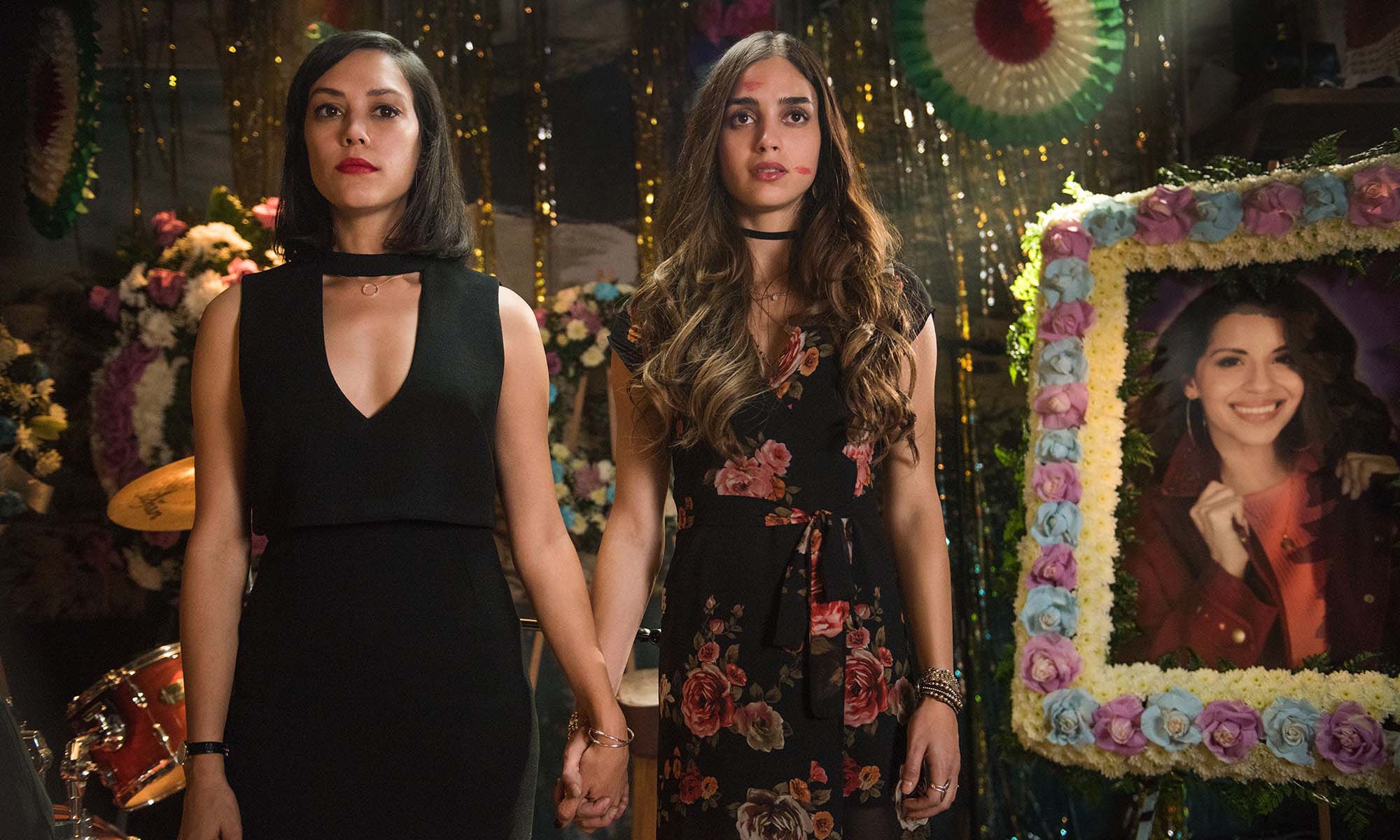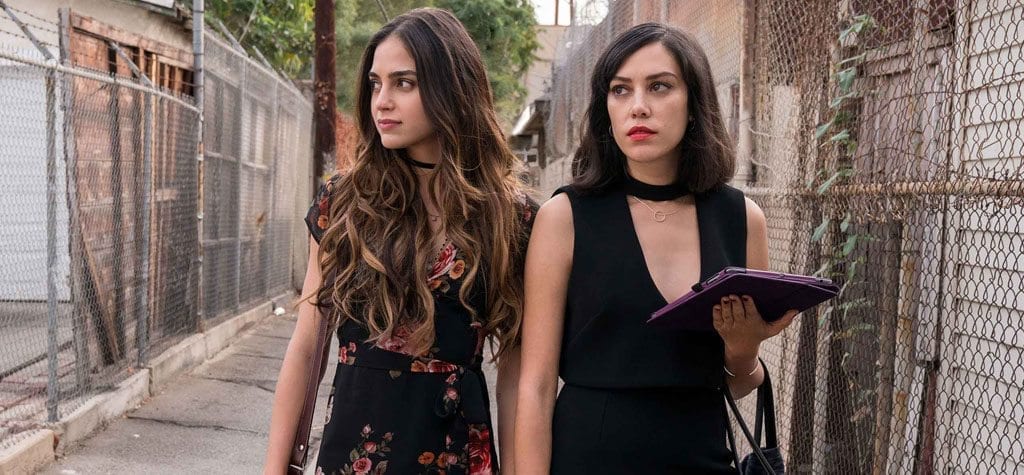
LGBTQI love letter to a changing LA: All the reasons to watch ‘Vida’
The new season of Vida dropped on Starz this spring. We revisit all the reasons Vida should be your next bingewatch from back when the first season launched.
—
The drama Vida was first announced by Starz back in 2016 as one of three projects based on Spanish-language formats and stories from Hispanic creators, writers, and producers, something the network’s CEO Chris Albrecht described as part of its “programming strategy of seeking diverse voices” and targeting “underserved audiences.”
Latino representation on screen is a topic that has cropped up in debate within the entertainment industry over the past several months.
The Oscars came under fire earlier this year due to an absence of Latino nominees in any of the acting categories, leading to a spotlight on USC’s Media, Diversity, and Social Change Initiative statistics showing that while Latinos make up 18% of the US population, in 2016 Latinos represented just 5.8% of speaking roles in film & TV.

Part of Starz’s goal is to change the landscape and create programming that caters to Hispanic viewers, which the offer of Vida is a significant part of. Focusing on two Mexican-American sisters from the Eastside of Los Angeles, Emma and Lyn (Mishel Prada and Melissa Barrera) return to their old neighborhood where they are confronted by the past and the truth about their mother’s identity.
However, it’s not just the Latinx community the show speaks to. The half-hour drama’s storyline heavily focuses on LGBTQI themes, gentrification, and a side of LA not often portrayed in mainstream TV shows.
Showrunner Tanya Saracho (How to Get Away with Murder) pointed out this week that while Vida is a family story, it’s also a feat because “we haven’t had a chance (until now) to tell a story like this steeped in queerness and on the Eastside of LA.” Ahead of its May 6 release, we’re looking at all the reasons Vida is an essential watch in 2018.

A voice for the Latinx community
Saracho highlighted the significance of the show’s Latinx representation, not just in front of the camera, but behind it too. Pointing out the writers’ room is entirely Latinx, she added, “You can’t tell a story like this without that type of formula. We have been whitewashed or brown-faced — we wanted to get it right.” The acting cast is filled with strong Latino talent, too.
In addition to Prada & Barrera – who play two very different sisters in the show – the cast includes Karen Ser Anzoategui (East Los High), Chelsea Rendon (Bright), Carlos Miranda (The Bling Ring), Maria-Elena Laas (Suffering Man’s Charity), Elena Campbell-Martinez (The 15:17 to Paris), Ramses Jimenez (Fear the Walking Dead), Luis Bordonada (Barracuda), and Elizabeth De Razzo (The Greasy Strangler).
Starz’s Albrecht celebrated the show for exploring identity and culture and reflecting “the intersecting worlds of Latin and American descendants of all genders and sexualities.” Vida “speaks to the heart of Starz’s programming commitment to present compelling stories for traditionally underserved audiences.”

Representing LGBTQI Latinx stories
On the topic of sexuality, queer Latinx voices are front and center within the storyline of Vida. As the two estranged sisters return to Eastside LA following the death of their mother, the plan is to make an appearance the funeral, sell their mother’s bar, and leave.
However, things get a tad complicated when they’re faced with their mother’s “roommate” Eddy and the sisters are forced to confront their mom’s secret past that would seem immediately obvious to viewers. The LGBTQI storyline starts with Eddy – a queer woman played by gender-nonbinary actor Ser Anzoategui – and is continued with Emma’s tumultuous history with lesbian Cruz (Laas).

During a Television Critics Association panel for Vida earlier this year, actress Barrera praised the storyline for its timeliness, while Saracho declared, “We don’t (normally) get to do this . . . (tell stories about) brown, queer femaleness.”
Vida is “Latinx, but it’s a queer show.” Saracho also lauded Starz for giving her so much creative freedom, which is illustrated with the chosen name: Vida means life in Spanish. According to the playwright, TV writer, and showrunner, the story “is my vida, my life.”

Gentrification and a new side of LA
While the story follows two sisters as they journey home, the “secret” of their mother’s past forces the pair to examine their childhood and reunite with people from the past to face up to their neighborhood’s changing cultural landscape.
Within the heated climate of the gentrification of Eastside LA, Vida sees vlogger Mari (Rendon) fight against the takeover of the neighborhood and urge people to take action. Meanwhile, with real estate developers stepping in to renovate their mother’s bar, along with Eddy the two sisters have to figure out how best to handle the business and honor the memory of their mother.
Weaving gentrification into a sociopolitical narrative, Saracho noted the show is about “gente-fication”, a.k.a. “the gentrification of Latinx communities by other members of the Latinx community.” As such, the show gives “a different version of the Eastside of LA than the media has given us.”

Conclusively, Vida is a show with a lot to say and no doubt one that viewers will have a lot to say about. At a time when Latinx representation, LGBTQI narratives, and gentrification are hot topics in the entertainment industry, it’s clear Vida has made bold choices with regards to its sociopolitical standpoints. As Deadline put it, “Vida continues the evolving landscape of television when it comes to inclusive stories.”
The question now is where it decides to take the characters and how well the broader messages are weaved into the storyline to make it heard amongst a competitive TV market. But with so much to say, such huge potential, and only six episodes planned for the first season, it’s undoubtedly a worthwhile watch to add to your summertime bingelist.



